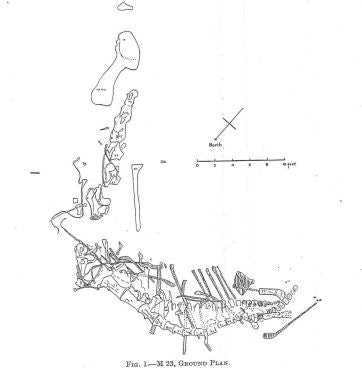Dry Mesa Brachiosaur Measurements
Errata from Poster
The humerus at the Smithsonian is specimen number 21903, not 29103!
Oversites
We failed to include the big humerus BYU 17336, which is a brachiosaurid. Lovelace et al. called it 17386, which is a Torvosaurus element. This element goes with the smaller individual.
BYU 13744 Ulna is also a brachiosaurid that goes with the big brach from the quarry.
Table of Measurements of the Dry Mesa Dinosaur Quarry brachiosaur material

Dry Mesa Brachioasur material compared to Tendaguru specimens

Migeod (1939) published a quarry map of an articulated sauropod. Unfortunatley the material has run into challenges since its discovery. One of us (BC) saw the material in 1997 and noticed that though it certainly looks brachiosaurid, it may not be assignable to Giraffatitan brancai, it has a, to us, significant differences in the centrum/neural spine proportions, as well as laminar differences.
During this work we compared the Dry Mesa material to the photographs taken by BC and were surprised to see some surprising similarities between the Dry Mesa Dinosaur Quarry brachiosaurid and the Migeod animal. The proportions of the neural spine height to centrum length and the absence of dual supraprezygapophysial laminae are but two uniting characters.
The focus of this work was on comparing the Brigham Young University brachiosaurid material to the holotype of Brachiosaurus altithorax, however a more serious effort comparing the material to Migeod's is under strong consideration. We are not saying the Dry Mesa material and MIgeod's specimen are the same species, but we do notice similarities.
The Dry Mesa cervical vertebrae were compared to the Tendaguru material and, overall, they compare favorably to one another. As Taylor (2009) notied, the SI and SII specimens may not be as "clean" as been traditionally understood, and potentially further complicated by the possibility that SI and SII may not be the same taxon, plus the fact the most illustrated and discussed proximal dorsal vertebra may not belong with the rest of the attributed articulated series. The cervical similarity may indicate a conservative cervical vertebral morphology among the brachiosaurids. A future project is to 3D scan the Dry Mesa material to better compare with the Tendaguru elements.
